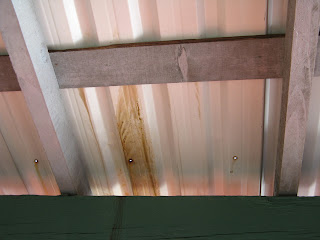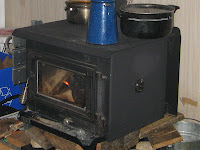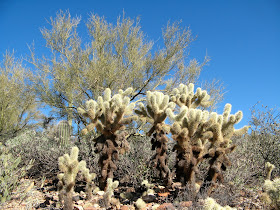
This time of year, our
KOZI wood burning stove is the heart of our home. It came with the cabin and has been a steadfast friend ever since. With regular
stovepipe cleaning, it keeps the fire roaring, or low and slow.
A woodstove must have
wood. For us, that's fairly simple. During high water, the
wood floats right to our front porch. All we have to do is scoop it up, cut it up (sometimes) and let it dry. When we are gathering wood throughout the summer, we are dreaming of the cozy fires it will bring during long winter nights.
 Storing wood
Storing wood on our cabin's float is problematic. We want it close, but not weighing down the foundation of our cabin. Our floating woodshed serves this purpose well. For those really rainy and windy nights, we have our small indoor wood shelf (
click here for directions) that holds about 4-5 days worth of really dry wood. It takes up a little space in our "guest room," but no one seems to complain.

Because we gather wood from
debris floating on the lake, it comes in all sizes. When it's large, it must be cut and split. For twelve years we completed that task using a chain saw and ax. We still use the chainsaw to cut the pieces into stove lengths, but for Christmas I got an
electric log splitter. What a wonderful device for both of us to use.
In case you missed the video, here it is. Watch out for your fingers!
Do you use a woodstove? Do you use it for heating, cooking, or anything else. I'd love to hear your experiences. -- Margy


















































